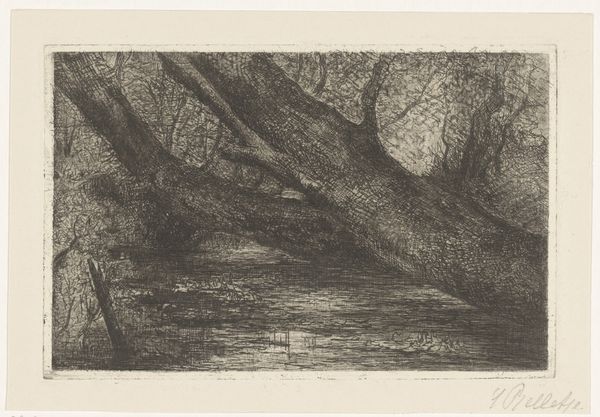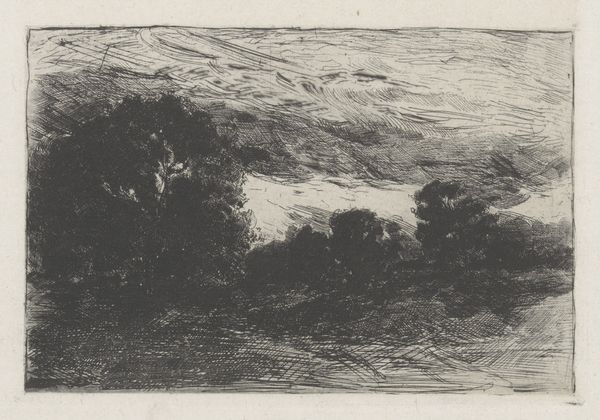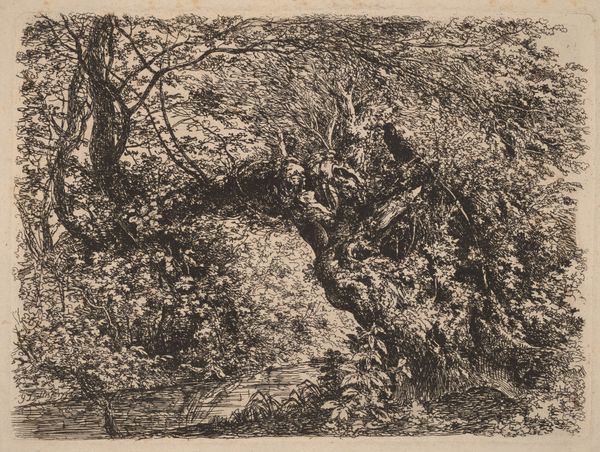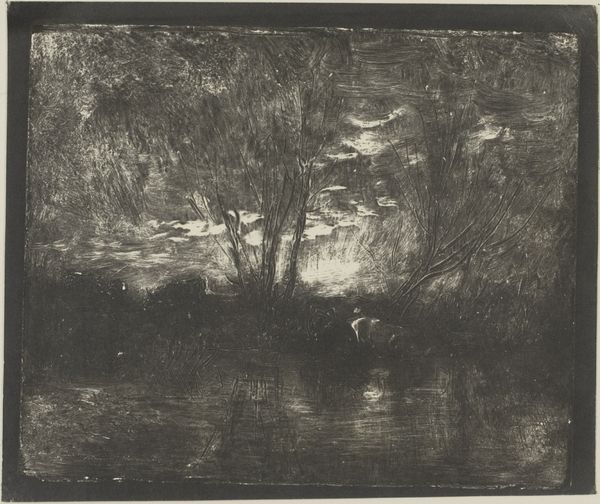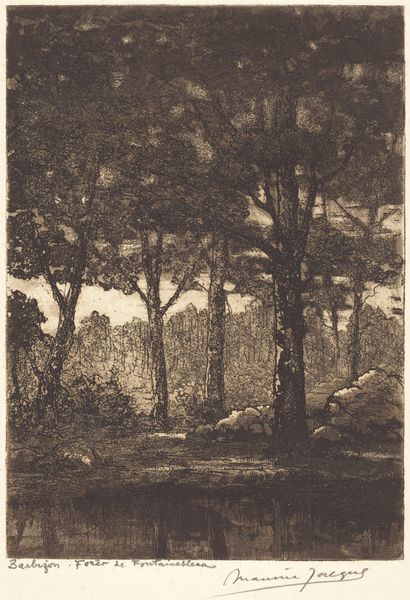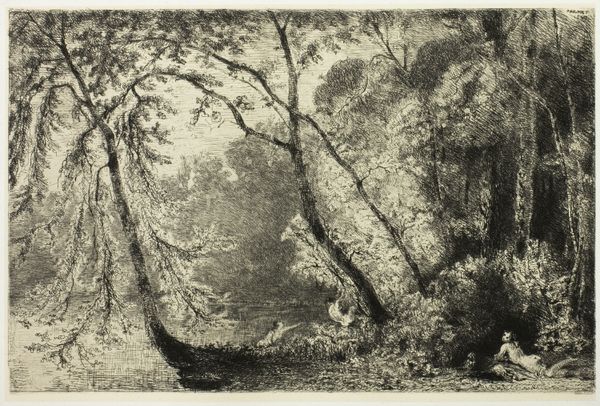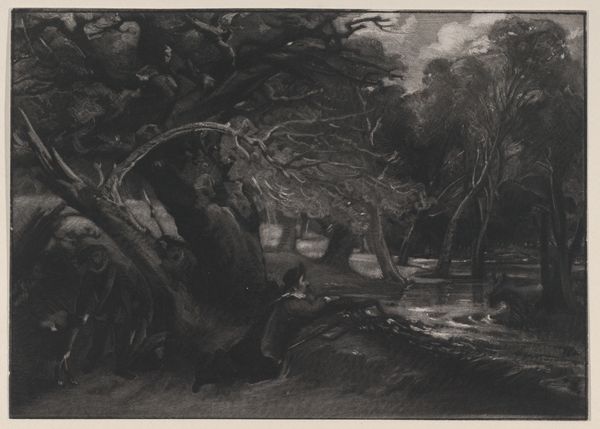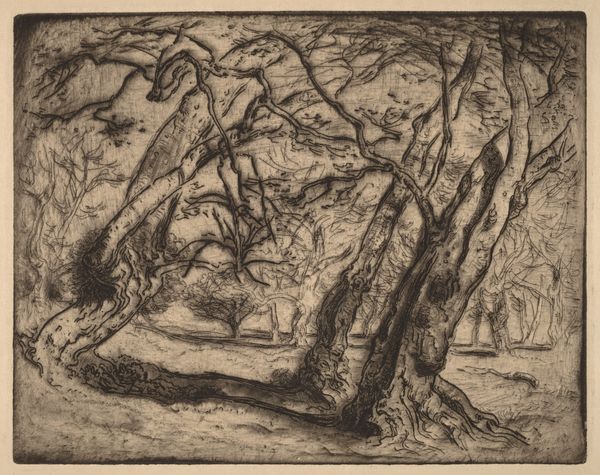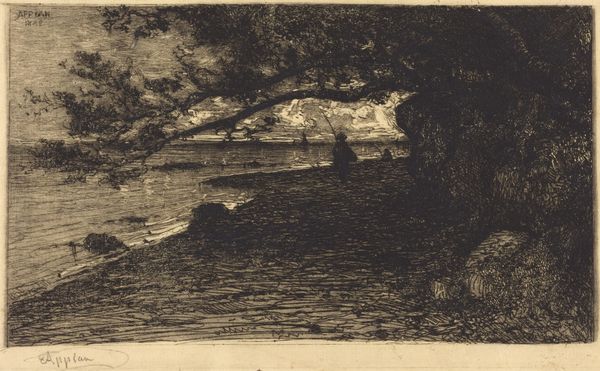
drawing, print, paper
#
drawing
#
natural shape and form
#
ink drawing
# print
#
pencil sketch
#
old engraving style
#
paper
#
organic drawing style
#
ink drawing experimentation
#
pen-ink sketch
#
france
#
munch-inspired
#
pencil art
#
natural form
Dimensions: 150 × 200 mm (image); 163 × 214 mm (sheet)
Copyright: Public Domain
Editor: Here we have Camille Corot's "The Thinker," created around 1854. It's an ink drawing or print on paper, currently at The Art Institute of Chicago. There's a solitary figure near a gnarled tree, giving off a sense of melancholy and contemplation. How do you see this work? Curator: For me, it’s less about the 'thinker' himself and more about the production of the image. Consider the materiality of ink on paper, the social accessibility of prints at the time. Was Corot aiming for high art, or something more readily consumed by a broader audience? Think about the labor involved in creating the printing plate, the multiple impressions. Editor: That’s a really different way of approaching it! I was focused on the lone figure. But now I'm thinking, what kind of ink did he use? And what was the paper-making process in 1854 France? Curator: Exactly! And how does the 'thinker' relate to labor? Is he a bourgeois intellectual, removed from manual work? Or does his 'thinking' have practical implications, perhaps for land management or resource extraction? The composition itself, with its contrast between light and dark, almost mimics the process of creation, light revealing the form out of darkness. Editor: So you’re suggesting that the very materials and process are integral to the meaning, and challenge a straightforward interpretation of the subject matter. Curator: Precisely. The focus shifts from romantic individualism to a broader understanding of art production and consumption within a particular historical and social context. It encourages us to think about art not just as a beautiful object, but as a product of labor and materials. What new appreciation do you get from this consideration? Editor: I now appreciate it’s more about understanding the world that shaped the image and Corot's intent to engage it in his artistic work.
Comments
No comments
Be the first to comment and join the conversation on the ultimate creative platform.
